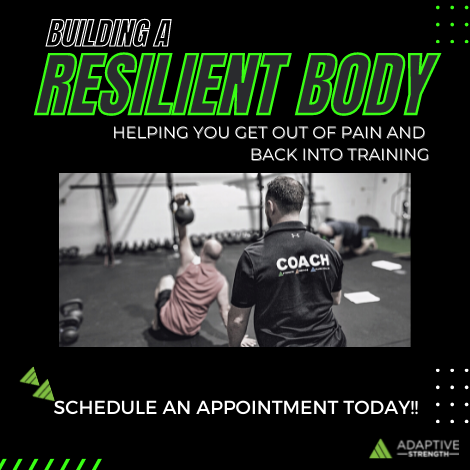Have you ever been told you have “tendonitis, golfer’s elbow, tennis elbow or jumpers knee? Tendinopathy’s are a common complaint we see everyday here in the studio and is very common among those who engage in physical activity and sports.
However, the diagnosis and usual advice for people can often leave people confused and struggling to return to their desired activities
If you’ve been in this situation it is important to understand what’s going on and how to work through the issue towards your goals. We are big fans of giving people the knowledge to be able to better self-manage their bodies. This article aims to provide more clarity on the topic and give you a practical overview and approach to help you better manage your tendinopathy.
What is tendinopathy?
Tendinopathy is a broad term used to describe painful conditions in and around tendons. It used to be categorized as either tendinitis in the acute stages and tendinosis in a longer-term degenerative state, but this is no longer the case. Evidence suggests currently that there may not even be an inflammatory component to tendinopathies, hence the recommendation to avoid the term “tendinitis”
Typically Tendinopathy usually occurs when you overload a tendon too quickly. It’s not that you did something “wrong”, rather you may have just done too much, too fast, too soon. Typically occurs gradually over time rather than any one-off event and worsens in pain with increased activity.
Think of it as a combination of excessive training stress combined with insufficient time for the tendon to remodel/adapt after training, leading to tendinopathy. As a result, you experience pain and discomfort in the tendon
It often feels like pain and discomfort in the back of your elbow or pain at the bottom of your knee cap. Pain tends to occur instantly with loading or certain activities and usually ceases almost immediately when the load or activity is stopped.
The key to overcoming it is modifying the way you perform the activity to temporarily offload it, and then gradually exposing it to the load again in order to force an adaptation.
Key Management Recommendations:
Whether is the Achilles, knee or elbows a “tendon is a tendon” and similar general principles apply regardless of which area of the body you are experiencing pain.
Key Point 1: Rest is NOT recommended
Tendons tend to adapt as a result of loading from an activity. If you completely rest, the tendons will gradually adapt by decreasing their capacity for activity. For this reason, we strongly advise against rest for tendinopathy.
Rest can help individuals avoid pain however as soon as you return to your chosen activity typically you will experience a resurgence of your pain as your capacity for load has been reduced. This means with complete rest it is likely you will experience an even lower pain tolerance when you return to activity. Tendons must be stimulated as part of the recovery process.
Key Point 2: Pain will be part of the rehab process
It’s important to understand that pain will be part of the rehabilitation process. Pain does not reflect ongoing tissue damage or harm. However, you should not ignore your pain and push forward completely without making modifications. Pain should not exceed your tolerance level. Think about tolerance as the idea that it should not feel debilitating during or after activity but rather manageable
Key Point 3: Full recovery from tendinopathy typically takes several months
It’s important to set realistic expectations as it typically takes several months and often more for a full recovery. If you experience load-related pain that resolved very rapidly it is unlikely to be tendinopathy.
Ok so what should you do?
Step 1: An initial period of unloading and Modification:
If you are experiencing pain with certain movements in the gym the first step would be to modify activities to allow the area to calm down and become less painful. This sounds like a no-brainer but it is a commonly missed step in rehabilitation.
A major contributor to the development of tendinopathy is the repetitive application of excess loads beyond the capacity of the tendon. In other words, this could mean squatting, bench pressing, or running too heavy loads every week for several weeks or months beyond the tendon’s capacity to adapt and recover.
On the flip side, we also don’t want to fully stop everything and unload the tendon as we know this leads to weakening of the tendon and often a resurgence of pain once people return to their chosen activities.
The key here is while it’s important to modify and unload the tendon we don’t want to fully unload the tendon. We want to decrease the stress of our activities enough to allow the area to calm down and become less painful.
Modification can be done in numerous ways such as decreasing load, sets, reps, or amount of times you train each week the list is endless.
The first and simplest one to try is to use less load and slow the movement down! Cranky tendons love tempo (slowing movements down)
As a guide temporally modify or eliminate activities that cause greater then 3 out of 10 pain (1 being no pain and 10 being greatest pain of your life)
For example, if you are experiencing elbow pain with bench pressing the first step would be to reduce the load and slow the movement down. Completing 3 seconds on the way down and 3 seconds on the way up. This could be all you need to do so that pain feels manageable
If you would like more specific modifications for your specific tendinopathy reach out we are here to help
Step 2: Direct tendon Strengthening
A common mistake when attempting to rehabilitate from tendinopathies is avoiding painful movements altogether. Once you have modified exercises or activities that were aggravating and your pain and symptoms have calmed down. Then it’s important to directly load the tendon again to build up its strength and capacity!
For example, if you are dealing with elbow pain with the bench press you could add in some banded triceps pushdowns that really isolate the tendons. You would perform them in a slow 3-second tempo on the way down and on the way up. Follow the guideline that pain should not be greater than 2 out of 10 (1 being no pain and 10 being most pain ever)
Key Take Away:
The most effective evidence-based treatment for tendinopathy at the time of writing this article is that complete rest is definitely NOT recommended but rather allows a temporary period of unloading and modification of training followed by a progressive strengthening program.
Remember if you are dealing with this situation and in need of assistance, we are happy to help guide the path be sure to reach out with any questions





